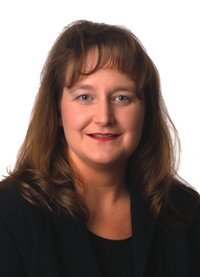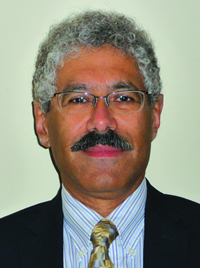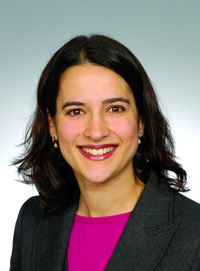The fact that rheumatic diseases can affect Native American populations in the United States and Canada differently than other ethnic groups might seem like an issue only for physicians practicing in areas with a high concentration of indigenous peoples.
But one point of this morning’s ACR clinical symposium Rheumatic Diseases in Native Americans: What We Can Learn, How We Can Help? will be to illustrate how the unique responses of those populations have implications and lessons for the broader rheumatology community.

“I think it’s important for us to realize that patients with different racial and ethnic backgrounds may have different presentation of disease, may have different associations with autoantibodies, and that we may need to tailor therapies based upon racial, ethnic backgrounds as opposed to assuming that everybody with a certain disease has the same diagnosis, prognosis, and outcomes,” said Judith A. James, MD, PhD, Chair of the Arthritis & Clinical Immunology Program at Oklahoma Medical Research Foundation and Associate Vice Provost for Clinical and Translational Science at Oklahoma University Health Sciences Center.
She is a co-presenter, along with Hani El-Gabalawy, MD, FRCPC, Professor of Medicine and Immunology and Endowed Rheumatology Research Chair at the University of Manitoba, and Elizabeth D. Ferucci, MD, MPH, FACP, a rheumatologist with the Alaska Native Tribal Health Consortium and an Affiliate Associate Professor at the University of Washington Department of Medicine.
Dr. James also noted that members of Tribal Nations live in areas throughout North America and that many Hispanics have some Native American lineage.
Native Americans tend to have higher frequency of some rheumatic diseases, Dr. James said, including rheumatoid arthritis and systemic lupus erythematosus. Researchers suspect the reason for that is probably a combination of genetics, environmental factors, and immune dysregulation. She works with tribal health systems to identify better blood markers for early diagnosis and disease-modifying therapy.
Dr. James also plans to discuss findings that some Native Americans do not have traditional autoantibodies and that some tribal populations have autoantibodies that have not been previously described. Another area of interest, she said, is that Native Americans are more likely than other populations to have a higher rate of autoantibodies without having a rheumatic disease, which she said might hold important clues about immune regulation.

Dr. El-Gabalawy’s research has uncovered a particular human leukocyte antigen (HLA) allele, HLA-DRB1*1402, that is very prevalent in Native American populations and predisposes those populations to RA. In working with groups from Australia and the Netherlands, he and his colleagues have new information about how it activates T cells through presenting peptides that contain citrulline residues.
By resolving the crystal structure of HLA-DRB1*1402, Dr. El-Gabalawy said, “We can tell exactly how peptides fit in the antigen-presenting groove. They have developed what are called tetramers to ‘fish out’ T cells that respond to this HLA allele, and we have been able to study the T cells and the characteristics of the T cells in patients with RA, and in controls who have this allele who don’t have RA.”
Dr. Ferucci will lead a panel discussion on how to make a difference with Native American populations, encouraging rheumatologists to work within the tribal healthcare system or to participate in outreach clinics. Native American populations usually don’t have ready access to specialists, she said.

“A lot of times the tribes realize, or the Indian Health Service clinics realize, they have a big problem with a lot of rheumatologic disease, and they might reach out to the local rheumatologist or to a university,” she said. “But sometimes, it is the other way around, with the rheumatologist reaching out to them.”
In a typical outreach clinic, Dr. Ferucci said, the rheumatologist might come to the site one full day every three months. As part of that, the visiting physician also usually provides education to the primary care providers on staff so they can be more comfortable treating the diseases between the rheumatologist’s visits.
Dr. Ferucci also wants to encourage more academic research into rheumatological diseases among Native Americans.
CLINICAL SCIENCE TRACK
Rheumatic Diseases in Native Americans: What We Can Learn, How We Can Help?
11:00 am – 12:30 pm Today • Ballroom B


